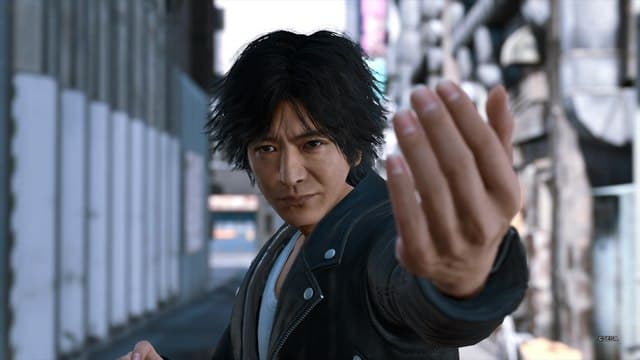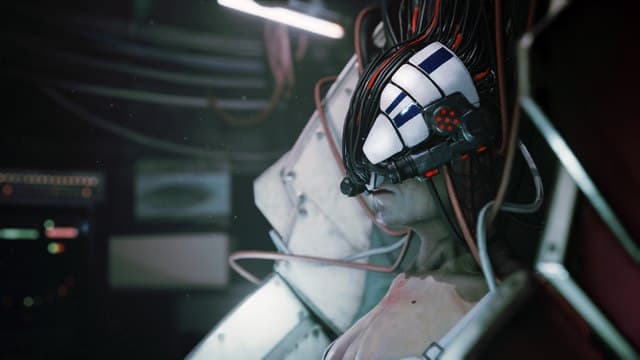In 2016 Doom was back with bright colors, cartoonish demons, gore, speed and violence. Players and critics alike hailed it as the long-awaited return of a series that lost its identity with its previous game, Doom 3 (2004). But Doom 3 is a real Doom episode: it explores lesser known (and probably less popular) elements of the original games, and it can teach us something more about what made Doom so special, and what its new reimagining is lacking.
Doom 3 and 2016 Doom are, more or less, two different retellings of the original 1993 Doom and share the same general plot. In a sci-fi future, the Union Aerospace Corporation causes a demon invasion on Mars (or on its moons, in the original games) and a lone soldier fights against hellspawns. Doom 3 has always been well received: its original PC version became a commercial success and has 87/100 on Metacritic, while the recent Switch port of its BFG Edition has a score of 84/100.
But since its launch, Doom 3 has been divisive, too. Someone considered it to be too similar to the first two games, too “retro-styled” and “old-school.” Others thought it strayed too far from the original formula, and this seems like the dominant opinion now. Nowadays, even new positive reviews and articles that defend Doom 3 define the game as “un-Doom” and “different” from the previous games of the series because of its frightening atmosphere and slower gameplay. “We wanted to really create this scary, intense, action-packed, horror game” said lead designer Tim Willits, and Doom 3 plays much more like survival horror, indeed.

Survival horror and horror video games in general changed in 2005, when Resident Evil 4 and F.E.A.R. were released. These two titles shifted the whole genre toward more fast-paced experiences, marking the end of the old-school survival horror of the first Resident Evil episodes, Silent Hill and Clock Tower. From then on, many horror games became increasingly action-based, peaking with the Call of Duty-esque Resident Evil 6 (2012). But when Doom 3 was released in 2004, survival horror was still thriving: 2004 saw the release of Silent Hill 4: The Room and Forbidden Siren, while Silent Hill 3 had launched just the year before. It was less an action interpretation of horror, and more a horror interpretation of an FPS.
Doom 3’s hallways and lab rooms are dark. They are sometimes pitch black. My flashlight is often my only source of light, and it can’t be used together with a weapon. Famously, there are no flashlight attachments for either my guns or my armor and “there is no duct tape on Mars.” This was due to technical limitations: as explained by Tim Willits in Dan Pinchbeck’s Doom: Scarydarkfast (2013) “the reason you couldn’t attach a flashlight to the gun was that the engine wouldn’t run fast enough” (but the Duct Tape mod added a flashlight to shotgun and machine gun just three days after the launch). Technical limitations related to the new expensive real time dynamic lighting technology of the game forced its developers to create a slower experience and to put fewer enemies into the maps, too.
The controversy surrounding the flashlight persuaded id Software to add a new hands-free source of light to Doom 3: BFG Edition (ported to Switch, PS4 and Xbox One in 2019), but technical limitations shape media. They become part of their aesthetics and their design. Doom 3 was designed for its flashlight.

“A lot of the gameplay was kind of built around it” former id Software president and CEO Todd Hollenshead told Polygon. Doom 3 wants to make players less aware of their surroundings, it wants to make them feel unsafe, it wants to make them blindly shoot demons lurking in the dark. It’s part of its horror identity.
Its soundscape is filled with environmental noises, cries, growls. Players see people being possessed in front of them, corpses hanging from the ceiling and demons suddenly appearing from blazing pillars. Monsters were redesigned, they became both more realistic and more unsettling, and new creatures were added: two headed demons that look like Lickers from Resident Evil, hordes of spiders with human faces and a disturbing mix between a human baby and a giant fly. The game’s spaces are narrow and filled with furniture and obstacles that hamper movement, and on higher difficulties, resource management is almost as important as it is in a more traditional survival horror game.
I’d argue that none of this is somehow “un-Doom”, or contrary to the the spirit of the franchise, because the first Doom was, in a certain sense, a horror game.

“For hundreds of thousands of people, Doom has invoked the kind of horror that you only experience as a small child when the lights go out and the monsters in the closet and under the bed come to life” writes Jessie Cameron Herz in Joystick Nation: how Videogames Ate Our Quarters, Won Our Hearts, and Rewired Our Minds (1997). Nowadays, it’s hard to think of 1993 Doom and Doom 2: Hell on Earth (1994) as scary horror games, but the same is true for the first Evil Dead movie.
Doom’s alien geometries, sharp shadows, dark caves and flickering lights used to have a very different impact when the game launched: designer and id Software cofounder John Romero defined the original Doom as “dark and scary. […] Scarier than any game that had come out before.” Some walls hide secret doors that open up when players activate their trigger (for example, when they pick up an item) revealing demons and zombies: they are called “monster closets.”
While the original Doom was mainly interested in exploiting this feature to add monsters at specific times, Doom 2: Hell on Earth used it to scare and confuse players, to make them feel weak. In Doom 2: Hell on Earth, monster closets became similar to jump scares. And in 1993 even the first-person view itself was disturbing: compared to previous 2D top-down views, first-person cameras limit visibility, like the darkness of Doom 3 and fixed camera angles in old-school survival horror.
It’s easy to get lost in early Doom games (a bewilderment perfectly captured by Ian MacLarty’s Doomdream) and it’s not surprising that a new wave of horror games (Amnesia: The Dark Descent, Slender: The Eight Pages, Alien: Isolation, Resident Evil 7…) rely upon first-person cameras. The horror genre was also an important influence during Doom’s development. Programmer and id Software cofounder John Carmack said that “thematically, Doom was viewed as Aliens meets Evil Dead 2” and Romero told the Guardian that “the artists kept Necronomicon, a book of images by the Swiss surrealist H.R, Giger, open in front of them, to help them come up with crazy disturbing stuff.” Giger’s influence is clearly visible in 1993 Doom and Doom 2: Hell on Earth, in how the games fuse machine and demonic flesh, recalling David Cronenberg, Clive Barker and John Carpenter’s body horror.

Doom 3 tried to reclaim this heritage and update it for the new millenium. John Carmack summed up the philosophy behind the first Doom saying that “story in a game is like a story in a porn movie. It’s expected to be there, but it’s not that important” (David Kushner’s Masters of Doom, 2003). But Doom 3 was released after the launch of Valve’s Half-Life (1998), and that game changed everything, because it used its digital spaces and scripted events more seamlessly to tell a story. Then we had System Shock 2 (1999), the forefather of explorative and narrative first person games (from BioShock to Gone Home), Ion Storm’s Deus Ex (2000) and Bungie’s Halo: Combat Evolved (2001). 2004 saw the launch of Half-Life 2 and Halo 2. At this point, the design of the original Doom games was regarded as outdated.
So, id Software called a professional sci-fi and horror writer, Matthew J. Costello, to pen the plot of Doom 3. The games has cutscenes, dialogue, optional audio logs, emails, in-game videos, and a more fleshed-out sci-fi world in comparison to Doom and Quake (1996): almost the whole story is set in a very similar Martian base, the main character is slower, there’s fall damage, weapons must be reloaded, headshots inflict extra damage, and the Martian atmosphere is unbreathable. The first fifteen minutes of Doom 3 are a slow introduction, set before the demon invasion, designed to define the status quo and clearly inspired by the beginning of Half-Life.
But Doom 3 doesn’t completely give up the abstract level design of Doom and Doom 2: Hell on Earth. Its only Hell level is a disorienting labyrinth filled with lava and enemies, with arenas that have no function but combat. The section looks like an explicit homage to the original games: in Hell, Imps (the classical fire-throwing demons) have skins that make them look more like their 1993 version, there are only weapons that were present in Doom and there’s no flashlight (players lose all their equipment when they teleport to Hell). It’s maybe interesting to highlight that something similar happens in Half-Life, where the final chapters (Xen, Gonarch’s Lair and Interloper) are set in the alien world of Xen and depict environments that make no sense from a human point of view.
Even Romero recognized the similarity between Xen and the abstract design of early 90s: “Every [modern] shooter takes place in the world somewhere,” he said during another interview with The Guardian. “There’s nothing crazy, it’s not like going to Xen in Half-Life. They always look really nice, but the abstract level style – I don’t see that around as much.”
Both Half-Life and Doom 3 needed to offer an in-game explanation for these chaotic spaces: they are alien, demonic places, they are different from our world. In Doom there’s a progression from the techbase style of the UAC buildings of its first episode (Knee-Deep in the Dead) to the extreme abstraction of the third hellish part of the game (Inferno) designed by horror aficionado Sandy Petersen, while Doom 2: Hell on Earth tries to represent recognizable human environments, like the city of its 13th level (Downtown), and opposes them to the twisted and unintelligible paths of its Hell maps.

We are not claiming that the first Doom games were not fast, cathartic experiences and that 2016 Doom doesn’t build on their legacies. 2016 Doom fully revives the gameplay-focused level design of the original games, it makes players sprint between fireballs tossed by endless armies of demons and kill gargantuan creatures with equally big fucking guns. It even maintains a certain contrast between the human Martian base and the irrational landscapes of Hell.
But Doom and Doom 2: Hell on Earth were more than that. In Of Eye Candy and Id: The Terrors and Pleasures of Doom 3 (originally part of Videogame/Player/Text, edited by Barry Atkins and Tanya Krzywinska) Bob Rehak writes that “Doom fully subjectivized the avatar […] turning into a prison of presence whose embodied vulnerability […] deliciously complemented its violent agency.”
It’s the same mix we find in the Lovecraftian atmospheres of the first Quake and, until more recent times, few other games have managed to hit that balance. 2016’s Doom and its power fantasy are one half of the Doom legacy, that fast action and fury and rage. But that’s only half of what it means to be Doom. There’s also horror and terror and things going bump in the night. Doom 3, then is that other half.


